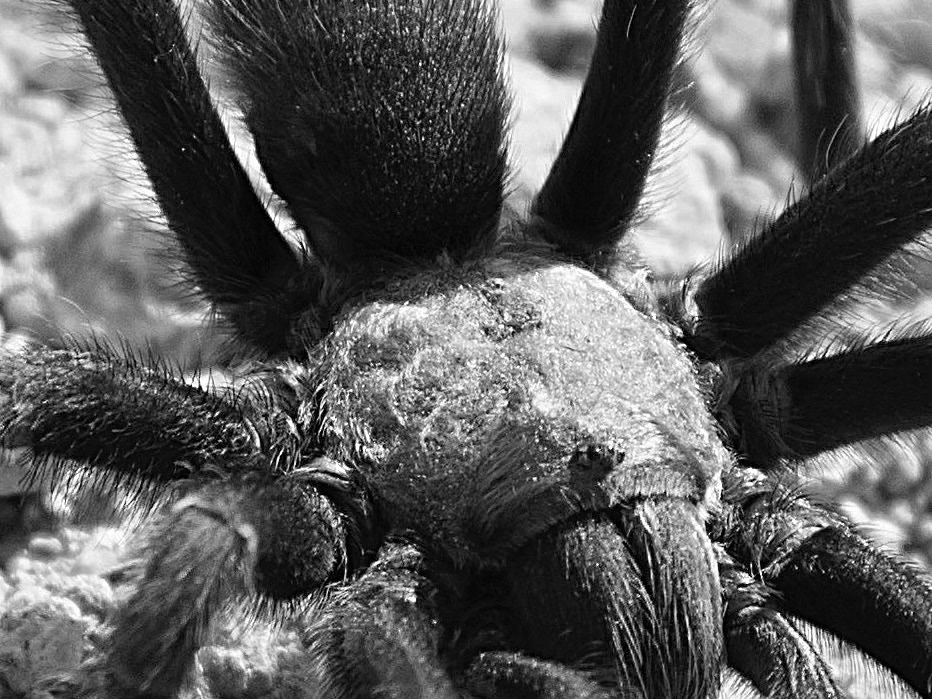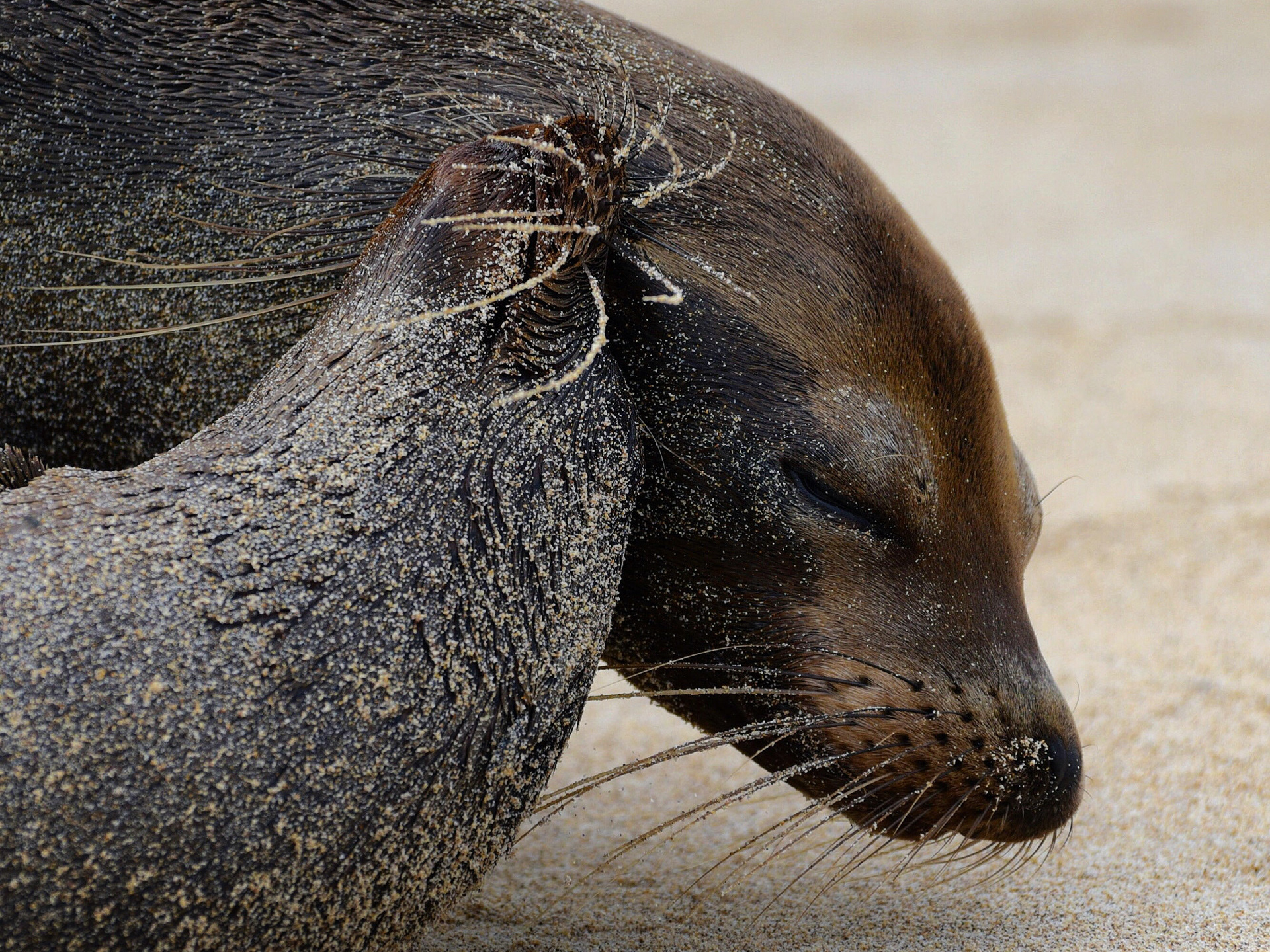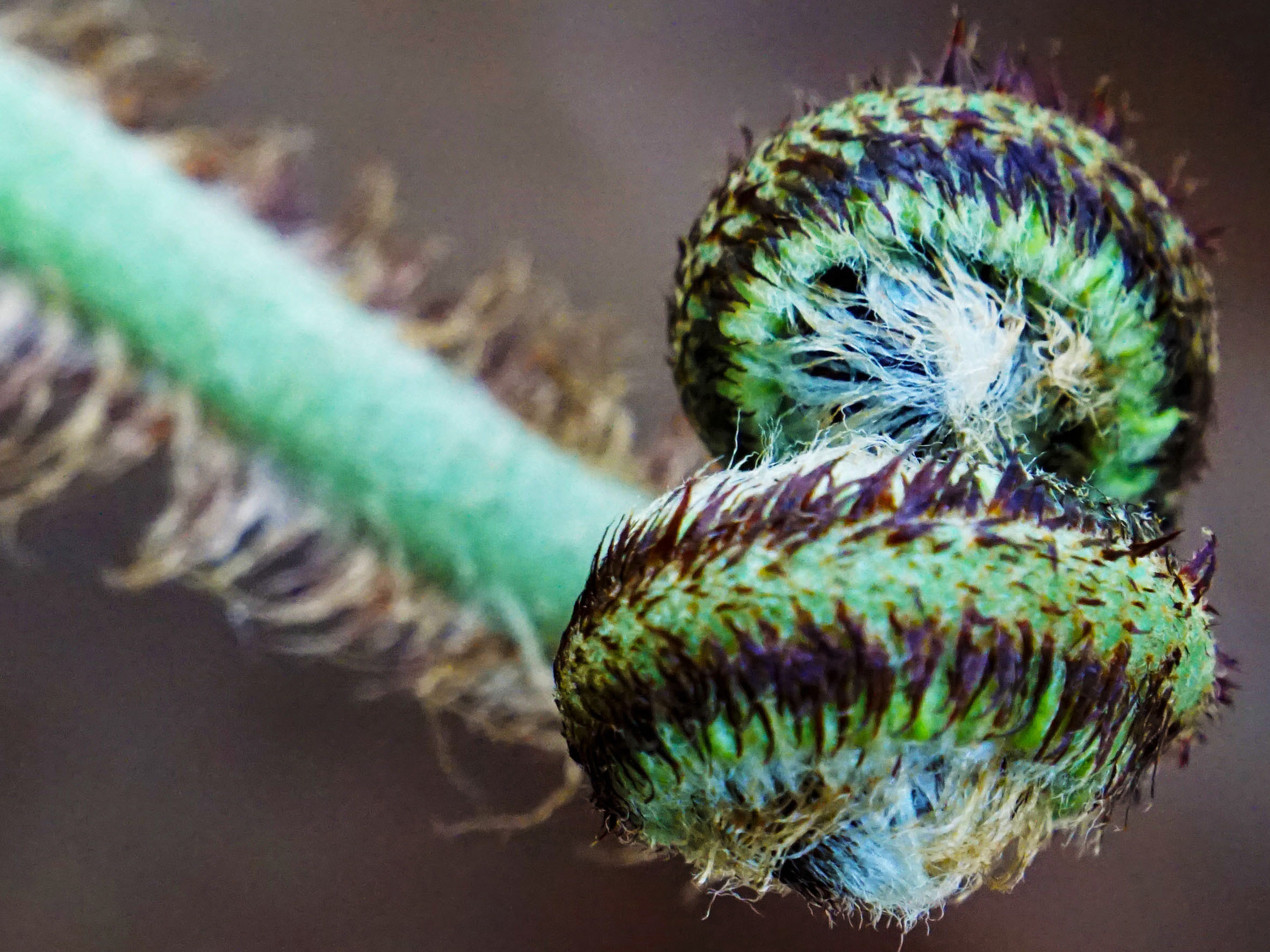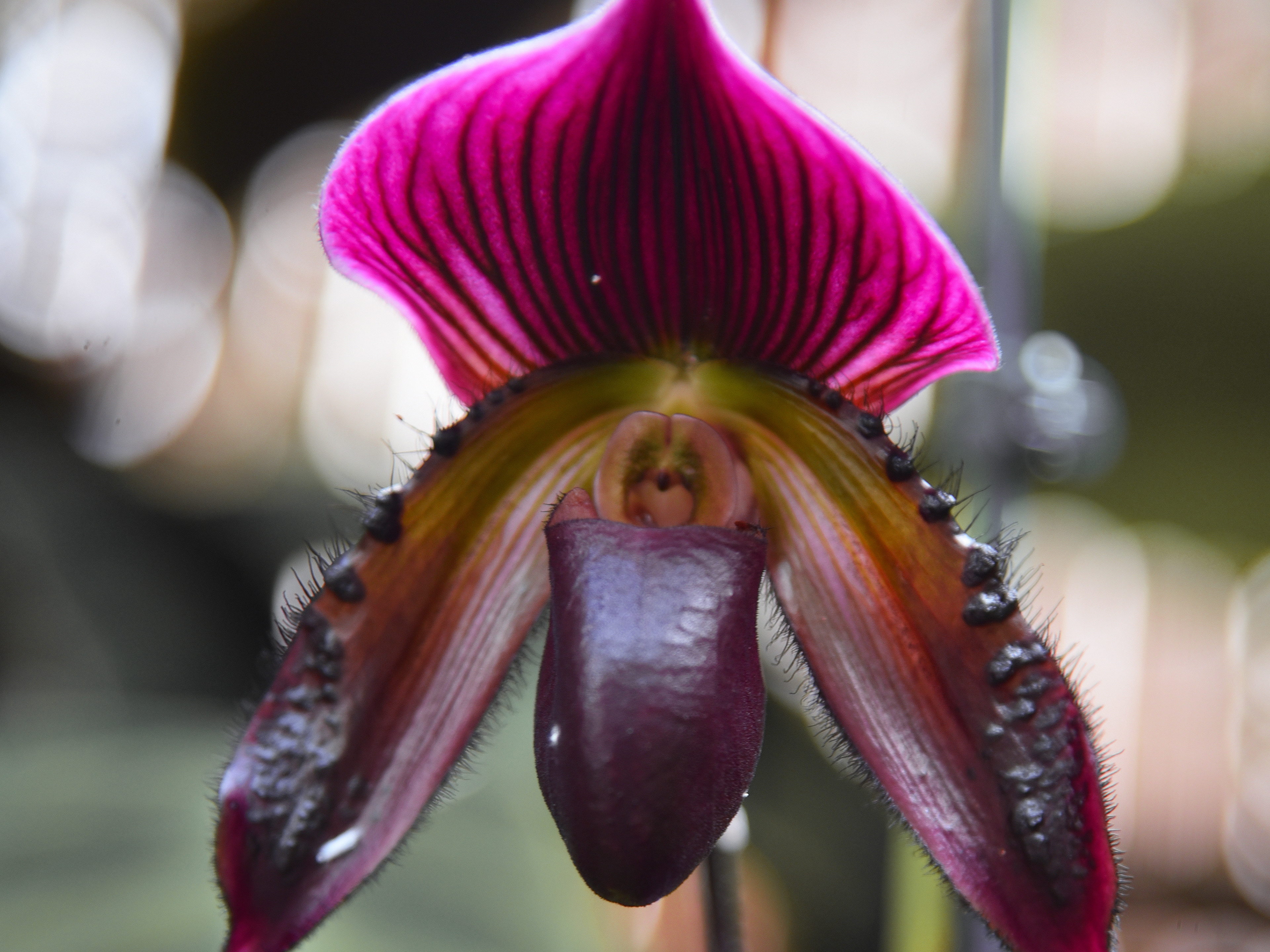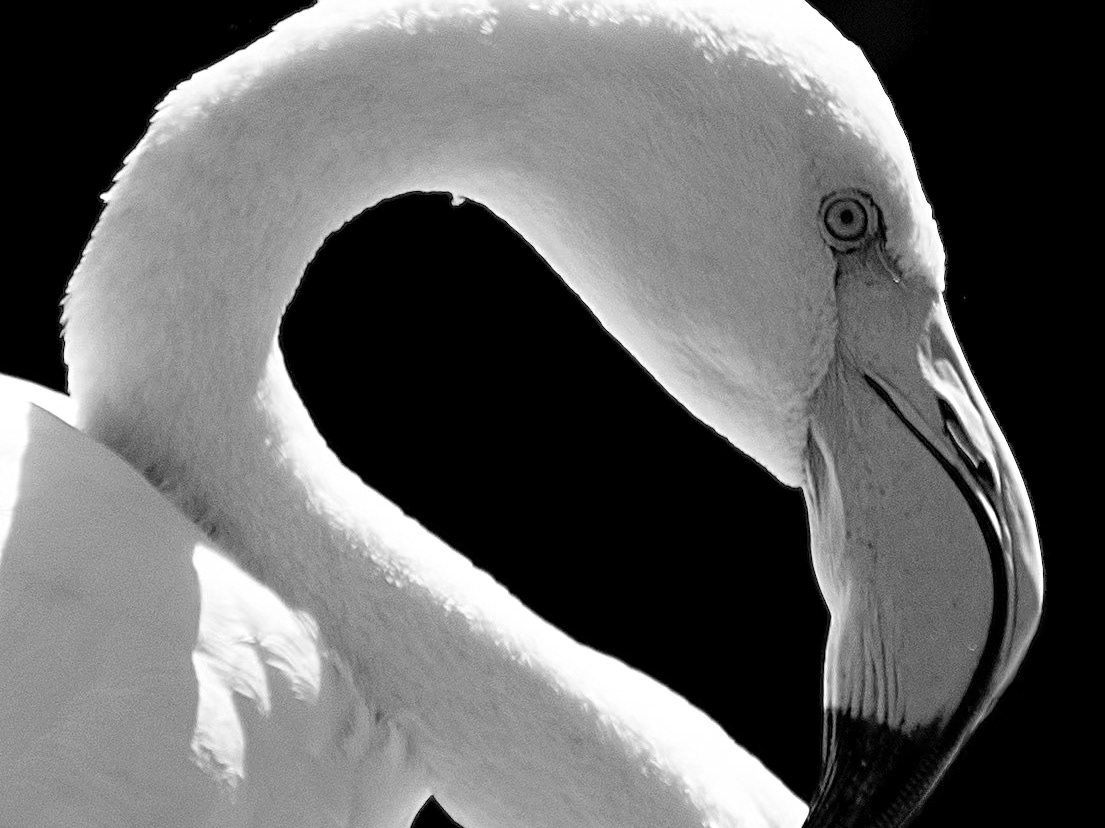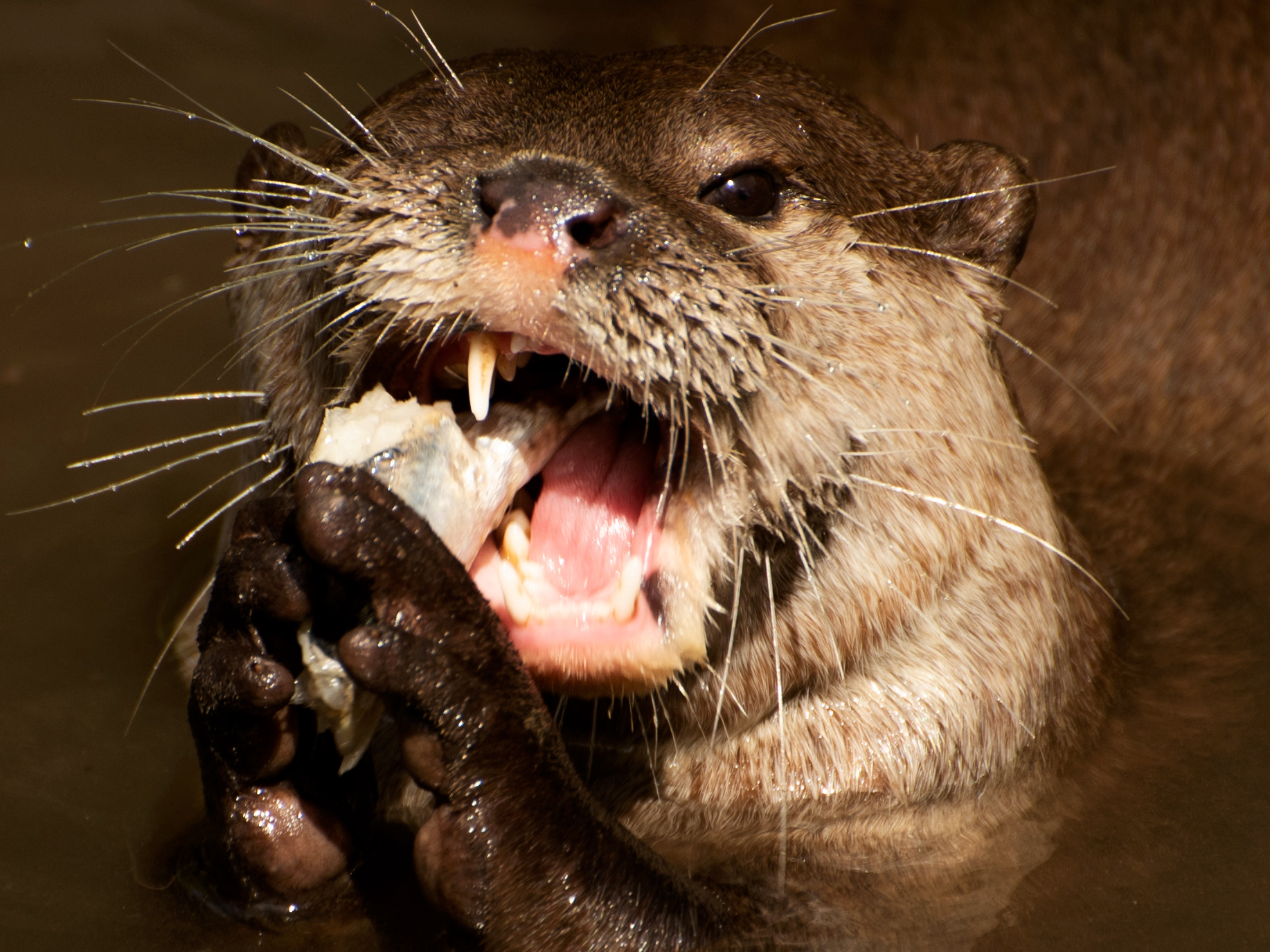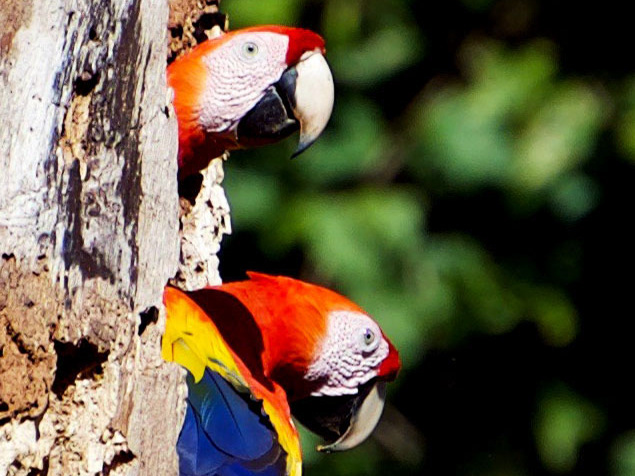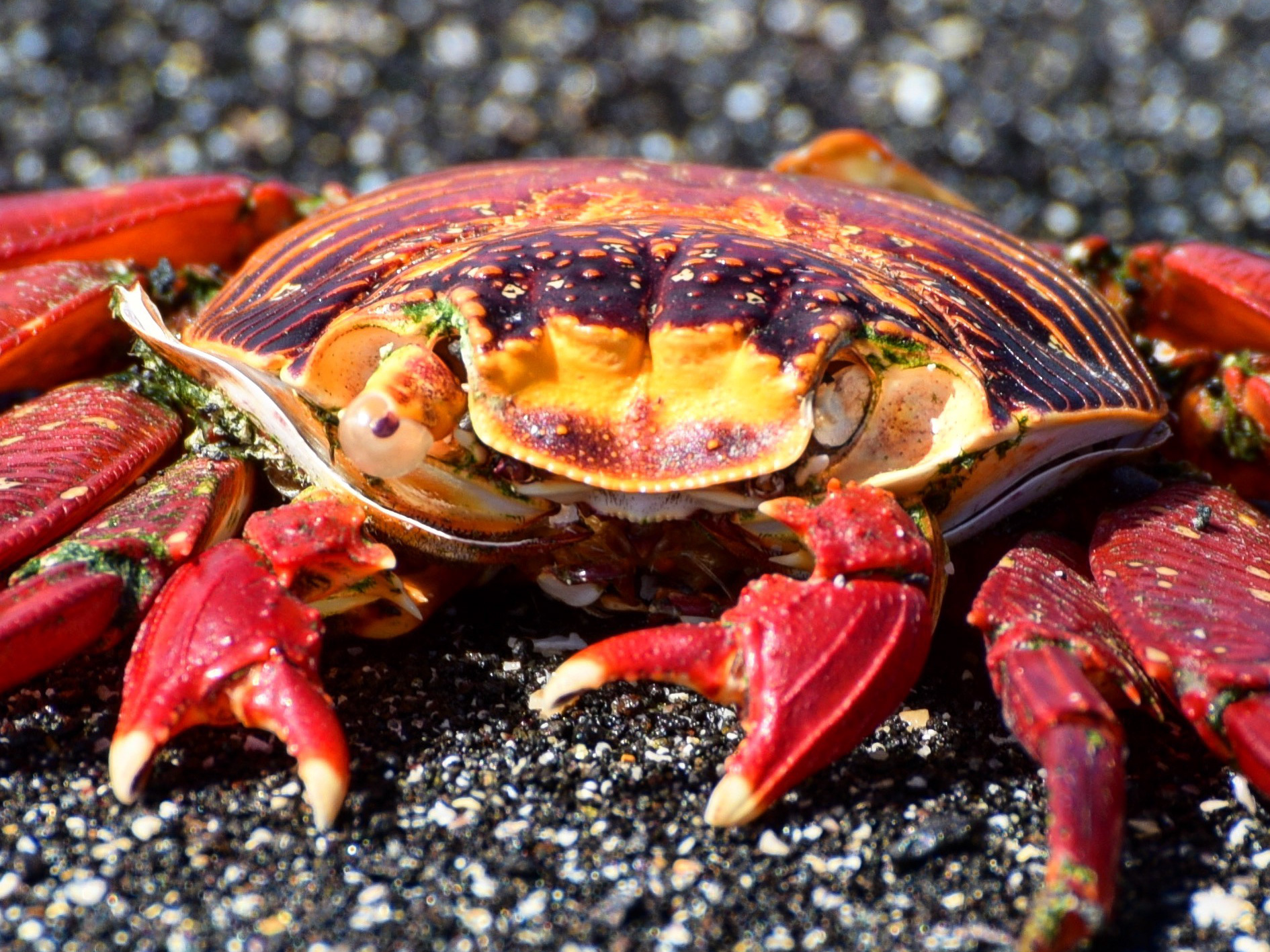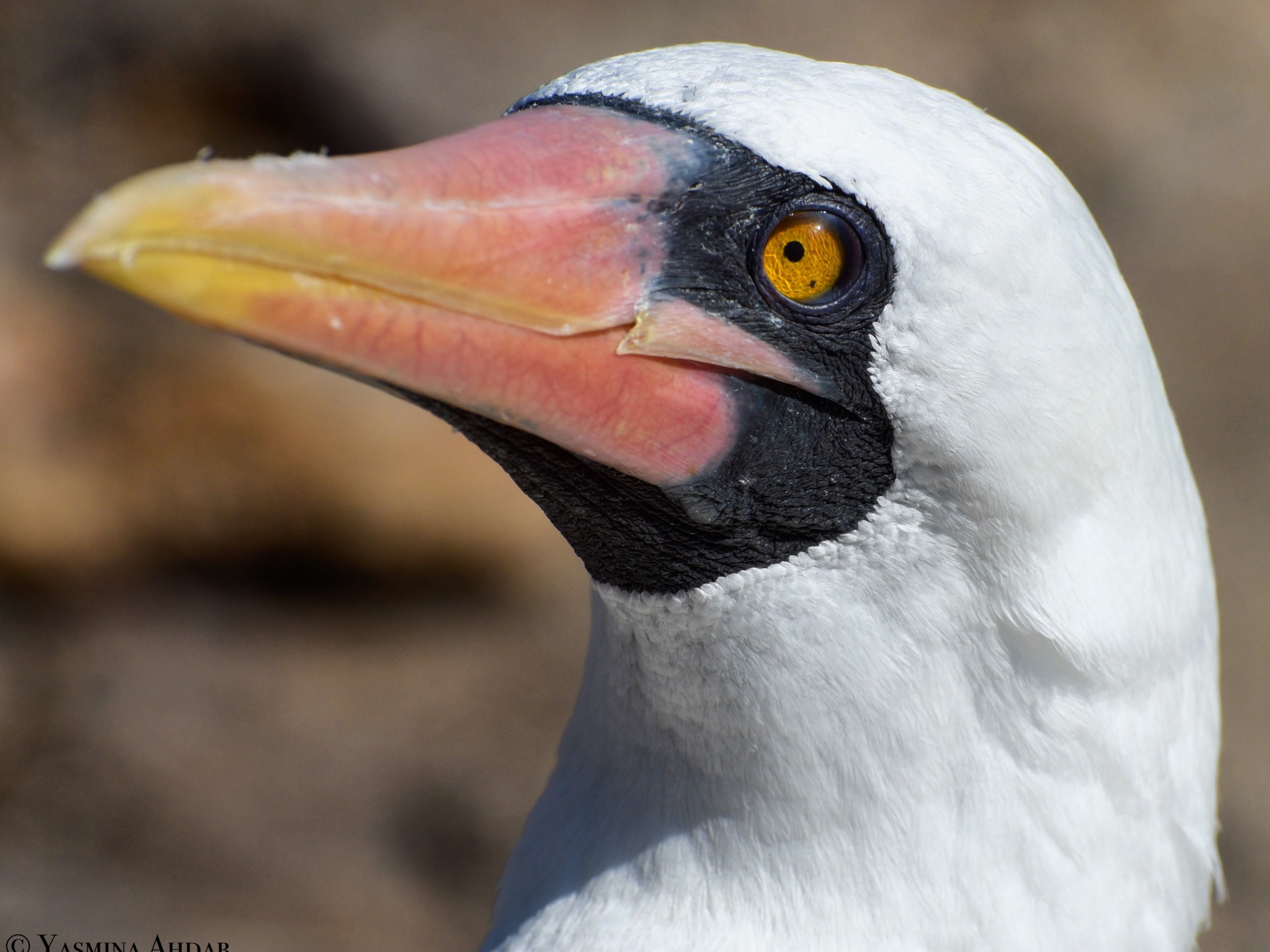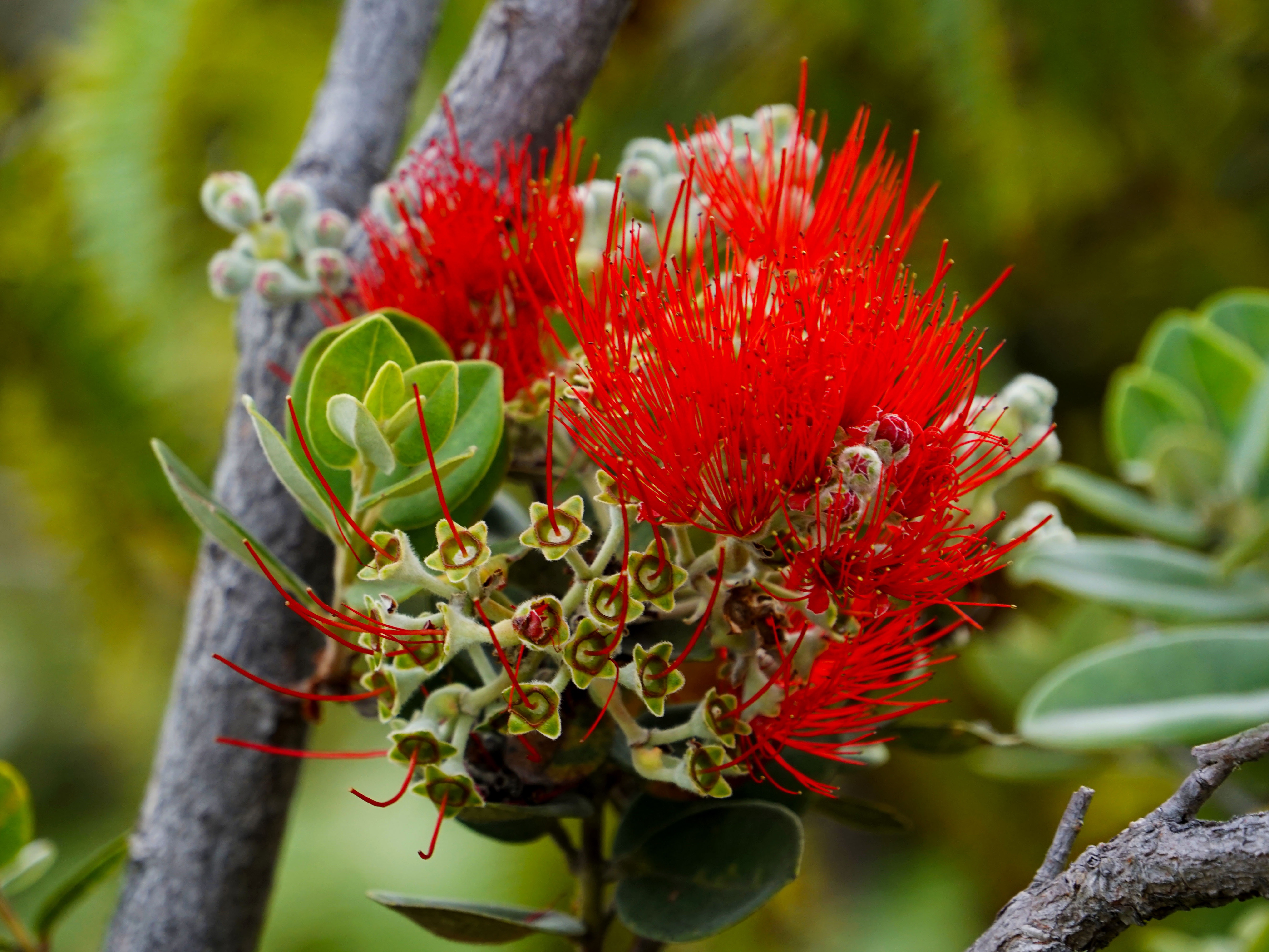Common Name: marine iguana; sea iguana; saltwater iguana; Galápagos marine iguana
Scientific Name: Amblyrhynchus cristatus
Animal Facts
Marine iguanas (Amblyrhynchus cristatus) are endemic to the Galápagos Islands of Ecuador. Scientists believe that millions of years ago terrestrial iguanas floated across the ocean on logs from South America to the archipelago. From those terrestrial species, marine iguanas evolved on almost every island of the Galápagos and display a shocking amount of diversity, varying in color, size, and shape on each island. The variability of color across populations may be attributed to their algal diet with red and green algae promoting varying degrees of red and green pigmentation. These iguanas are primarily herbivores, which is uncommon for modern lizards. They use their small sharp teeth and blunt noses to remove algae off rocks. To deal with the extra salt they ingest while grazing, they use a special gland that removes salt from their blood. They then eliminate the salt from their nostrils by sneezing. Since these iguanas often forage underwater, they developed flattened tails, allowing them to swim similarly to crocodiles. They also evolved sharp, long claws for gripping rocks underwater in strong currents and dark gray coloring, which is believed to absorb sunlight after they swim in the freezing waters of the Galápagos. Furthermore, marine iguanas are sexually dimorphic with males being much longer and twice as heavy as females. To attract mates, males defend territories and display brighter scales during the breeding season from December to March. If two males aggress each other during this period, then they may fight for hours and shed blood, as shown in the image above. When fighting, males do not bite each other, but rather thrust their heads together in an effort to drive their opponent away. Once the fight is over, the loser accepts submission and retreats.
Interaction with Humans
Although marine iguanas are protected across the Galápagos, they are at risk of extinction due to periodic El Niño cycles and introduced predators, such as cats, dogs, and rats that feed on their eggs and juveniles. With climate change triggering more frequent and warmer El Niño events, the iguana’s main food sources are vanishing. These lizards are being forced to eat brown algae, which they cannot digest well and which may even be poisonous to them. Thus, during El Niño cycles, many iguanas starve to death, resulting in anywhere from 10-90% of individuals in a population dying. To cope with the absence of food, the iguanas do what appears impossible: they shrink in weight and up to 20% in length! In addition to requiring less food to survive, shrunken individuals may be reabsorbing part of their bone matter. However, shrinking may not be enough to save this unique species. More conservation efforts, such as the Convention on International Trade in Endangered Species of Wild Fauna and Flora’s (CITES), are needed to protect this species from overexploitation and starvation.
Sources
• Eibl-Eibesfeldt, I. (1966). The Fighting Behaviour of Marine Iguanas. Philosophical Transactions of the Royal Society B, 251(772), 475–476. https://doi.org/10.1098/rstb.1966.0037
• Galapagos marine iguana (Amblyrhynchus cristatus). ARKive. Retrieved from https://web.archive.org/web/20161124025939/http://www.arkive.org/galapagos-marine-iguana/amblyrhynchus-cristatus/
• Laurie, W.A. (1990). Population Biology of Marine Iguanas (Amblyrhynchus cristatus). I. Changes in Fecundity relates to a population crash. Journal of Animal Ecology, 59(2), 515–528. https://doi.org/10.2307/4878
• MacLeod, A., Nelson, K.N., & Grant, T.D. (2020). Amblyrhynchus cristatus. The IUCN Red List of Threatened Species, 2020. https://dx.doi.org/10.2305/IUCN.UK.2020-2.RLTS.T1086A177552193.en
• Marine Iguanas Amblyrhynchus cristatus. MarineBio. Retrieved from https://www.marinebio.org/search/?pg=1&ob=title
• Marine Iguana | National Geographic. Retrieved from https://www.nationalgeographic.com/animals/reptiles/facts/marine-iguana
• Miralles, A., Macleod, A., Rodríguez, A., Ibáñez, A., Jiménez-Uzcategui, G., Quezada, G., Vences, M., & Steinfartz, S. (2017). Shedding light on the Imps of Darkness: an integrative taxonomic revision of the Galápagos marine iguanas (genus Amblyrhynchus). Zoological Journal of the Linnean Society, 181(3), 1–33. https://doi.org/10.1093/zoolinnean/zlx007
• Osterloff, Emily. Marine iguanas: the incredible shrinking lizards of the Galápagos. Natural History Museum. Retrieved from https://www.nhm.ac.uk/discover/shrinking-galapagos-marine-iguanas.html
• Rassman, K., Tautz, D., Trillmich, F., & Gliddon, C. (2003). The microevolution of the Galápagos marine iguana Amblyrhynchus cristatus assessed by nuclear and mitochondrial genetic analysis. Molecular Ecology, 6(5), 437–452. https://doi.org/10.1046/j.1365-294x.1997.00209.x
• Rothman, R. Galapagos Marine Iguana. Rochester Institute of Technology. Retrieved from https://people.rit.edu/rhrsbi/GalapagosPages/MarineIguana.html
• Vitousek, M.N., Rubenstein, D.R., & Wikelski, M. (2007). The evolution of foraging behavior in the Galápagos marine iguana: natural and sexual selection on body size drives ecological, morphological, and behavioral specialization. New York: Cambridge University Press, 491–507.
• Wikelski, M. & Nelson, K. (2004). Conservation of Galápagos Marine Iguanas (Amblyrhynchus cristatus). Iguana, 11(4), 189–197.
• Wikelski, M. & Trillmich, F. (1997). Body size and sexual size dimorphism in marine iguanas fluctuate as a result of opposing natural and sexual selection: an island comparison. Evolution, 51(3), 922–936. https://doi.org/10.1111/j.1558-5646.1997.tb03673.x

